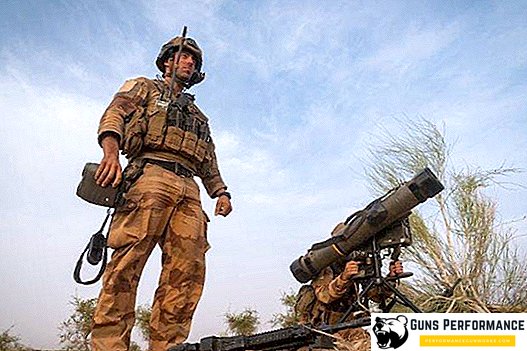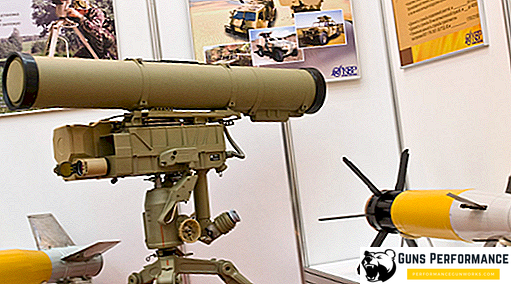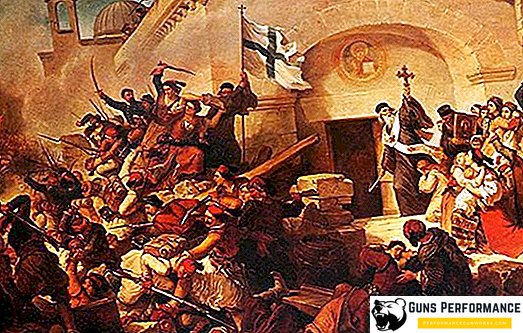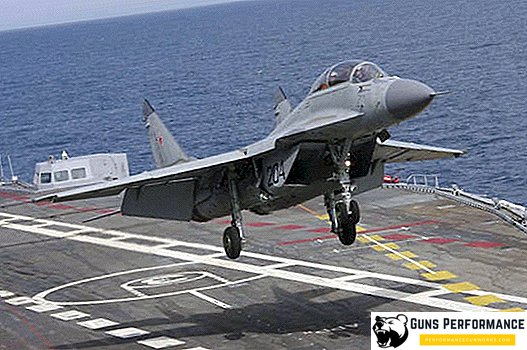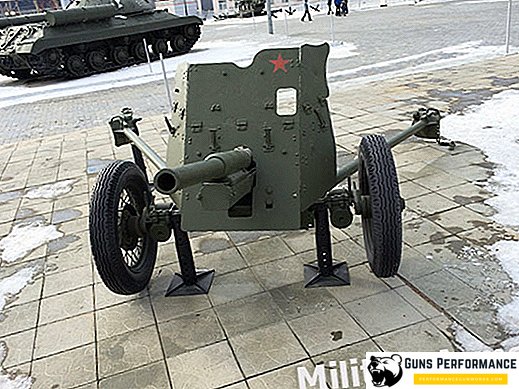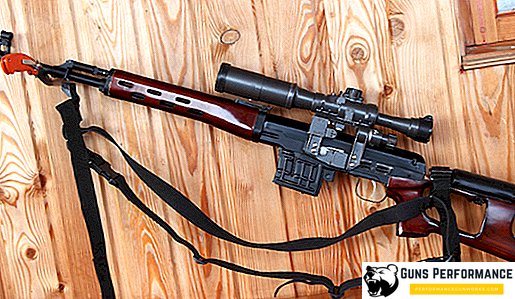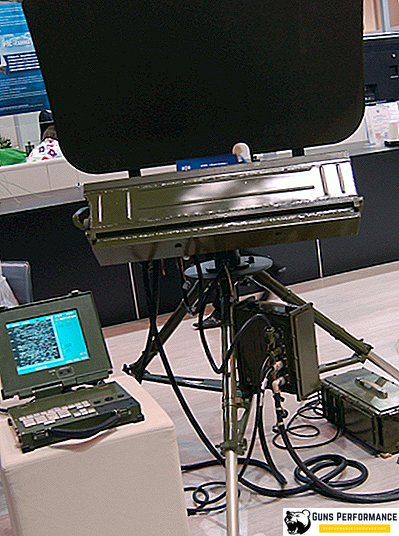The RPG-18 Mucha anti-tank rocket launcher was designed to destroy enemy shelters, fortifications, and armored targets, as well as to eliminate manpower, which is located in city-type structures and light shelters. A grenade launcher is a disposable weapon.
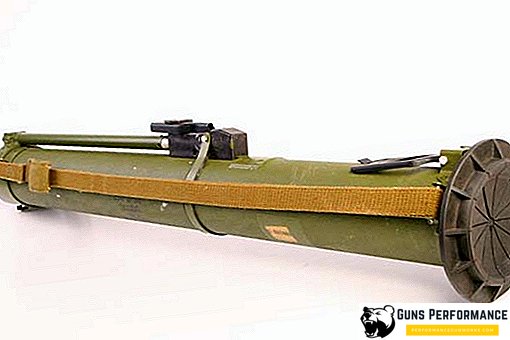
The RPG-18 represents the Soviet equivalent of the M72 “Low” grenade launcher manufactured in America in the 1960s. At the moment, RPG-18 armor penetration is no longer enough to destroy the latest generation of armored tanks, but it can be used quite effectively to defeat light vehicles, armored infantry and reinforced firing targets.
History of use of the RPG-18
The fly grenade launcher is one of the most common disposable grenade launchers in the world. They were actively used in hostilities in Afghanistan, Chechnya and Iraq.

The RPG-18 was successfully used by illegal armed groups and the Russian Army during both Chechen companies. When militants used these weapons against tanks, quite good results were obtained. Even "active armor" in many cases did not save against this weapon. But to use this weapon against the modern tanks (for example, the T-90) is ineffective due to the lack of armor penetration.
The fly grenade launcher was not only manufactured in the Soviet Union, after the Warsaw Pact organization collapsed in the 1980s, the production of the RPG-18 began in several countries that were party to it.
According to the data that were published in the open press, a hand-held anti-tank grenade launcher “fly” was produced by industry until 1993. A total of approximately 1.5 million units of the RPG-18 were produced. On the international military market, the cost of a grenade launcher at the prices of those years was estimated at $ 721. According to forecasts, due to the ease of manufacture of these weapons, will be popular for a long time.

As for the Soviet Army, instead of an RPG-18, an RPG-22, a more sophisticated rocket grenade, was supplied for production and armament.
History of the RPG-18
The first Soviet anti-tank rocket launcher with a single use was created by a design team, the main leading designers in which were I.Rogozin. and Baraboshkin V.I.

During the detailed and long-term development, the RPG-18 was invented. In the course of testing its characteristics and performance, the name “Fly” caught on the grenade launcher, which was connected with a peculiar device of a fly.

In 1971, a hand-held grenade launcher successfully passed ground tests, and already in 1972 it was put into service with the Soviet Army. Thus, the RPG-18 hand-held anti-tank grenade launcher replaced the RKG-3, an anti-tank cumulative grenade.
The idea of creating a "one-off" grenade launcher was not new. However, a distinctive feature of the novelties from the Swiss grenade launcher "Minigan", which was in service with many armies, was that the grenade had a jet engine.
Nevertheless, the RPG-18 was created according to the scheme tested at that time, which consisted of a launch canister (it was used for storage and transportation) and a striking element. The container was equipped with:
- trigger mechanism
- sight.
He represented a double telescopic tube - inside the fiberglass tube was aluminum.

Description of the device RPG-18
The launcher of the grenade launcher is similar to the system M72, its barrel consists of two tubes connected telescopically. Inside the fiberglass tube is a tube made of aluminum alloy.
The upper tube is made of fiberglass grade T13, which is impregnated with lacquer EP-5122. For the inner tube, an aluminum alloy of 65KhZMg6M or 65KhZD1T was used. pipes in the stowed position are one in the other, they are 705 mm long. To make a shot, the pipes are moved apart, thus forming a trunk with a total length of 1050 mm.
The grenade is fixed by stoppers in the inner tube; it presents steel plates with a cutout that are put on two stabilizer feathers. At the other end of the plate, with their bend, they are linked to the butt end of the trunk.

The process of the shot is as follows:
- To translate the "Flies" into a combat position from the marching one should open the back cover, then push the pipes all the way. At the same time, the front cover will open, and the front sight and the safety stand with diopter will take up a vertical position.
- The fly has a frame, which is a glass with printed figures and marks 5, 10, 15, 20, they represent a firing range of 50, 100, 150 and 200 meters. On both sides at the level of the top point of the aiming mark "15" horizontal strokes are applied, they can be used to determine the distance to the tank. The distance is determined as follows:
- if the horizontal strokes are in the width of the frontal projection of the tank hull, then 150 meters remain to the target.
- if the horizontal strokes are less than the width of the frontal projection of the tank hull, then less than 150 m will remain to the target.
- if the horizontal strokes are greater than the width of the frontal projection of the tank hull, then more than 150 m will remain to the target.
- Plates with the start of movement of the grenade are destroyed, and then from the trunk after the departure of the grenade, the stabilizer feathers jump off.
- On top of the back of the inner tube is the locking mechanism, percussion mechanism and primer igniter grenades, which are collected in one case.
- In the front nest of the housing is located striker percussion mechanism, which is mounted on the outer tube.
- The primer-igniter is located in the rear nest of the body, it is precisely on it that the striker strikes a blow. From the ignition of the capsule, an intensifying powder powder flashes, after which a beam of fire is transmitted to the jet engine igniter through the gas discharge tube.
The locking mechanism, which is placed on the inner tube in the rear part of the body, serves to block the impact mechanism during the stowed position, this prevents the ignition cap from breaking when the tubes are folded. In addition, the blocking mechanism prevents a shot, if the pipes are not fully diluted, in the fighting position it blocks the fixation of the pipes. The blocking mechanism thus ensures safety when the pipes are extended.

Performance characteristics
- Caliber - 64 mm.
- Weight - 2.6 kg.
- The length is 705 (1050) mm.
- The direct shot range is 135 m.
- Sighting range is 200 m.
- Penetration at 90 degrees is 300 mm, at 60 degrees - 150 mm.
- The mass of a grenade is 1.4 kg.
- The initial speed of the grenade is 114 m / s.
- The caliber of the grenade head is 64 mm.
To bring the RPG-18 grenade launcher into a combat state will take 8-10 seconds. A grenade can pierce up to 300 mm of armored steel. The grenade has a caliber of 64 mm. When exiting the barrel, the initial speed of the grenade is 114 m / s.
Grenade PG-18
The grenade has a caliber warhead and a jet engine. In a jet engine is a jet charge, consisting of the powder PPK-5. As a explosive projectile, an oxyol explosive is used, which represents chemical compounds that detonate under certain conditions.

Okfol is located in the main part of the grenade and weighs 312 grams.
A jet engine is attached to the rear of the grenade body on the thread. In the engine chamber there is a charge with pyroxylin powder in the form of tubes. The chamber is completed with a nozzle block with a stabilizer of four blades and a boost unit. In the transitional bottom there are inclined holes through which the flowing powder gases pass. They give a grenade rotation of about 10 revolutions per second. Grenade at the time of departure gets a speed of 114 m / s.
The grenade flies like a ballistic body, which is why it is practically not sensitive to side wind.
Video on the RPG-18
Shot from a grenade launcher Mucha
Security measures
When using a grenade launcher, it is necessary to observe increased security measures. That is why it is prohibited to shoot if there are people behind at an angle of up to 90 ° and closer than 30 meters, and also if there are obstacles behind the weapon closer than 2 meters.


